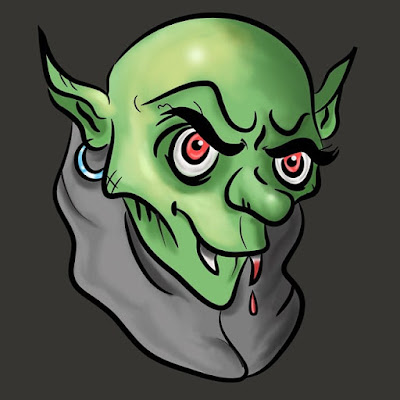 |
| Credit: Pixabay |
Revised and updated as of 12/15/2024.
Well, as I said I would on my Facebook page, I'm running late again with the Book-To-Movie which is normally every fourth Monday of the month. So, today's Book-To-Movie (BTM) is really supposed to be for November. For those who are new to A Far Out Fantastic Site, in a Book-To-Movie we review a work of prose fiction and its movie adaptation. I'm keeping this one short because I've had a cold all weekend that's put me back. In fact, I’m still recovering from it. In past BTMs, we've reviewed Bram Stoker's novel, "Dracula", and a few of its movie adaptations. These have included the unofficial original of all of the Dracula film adaptations, the silent "Nosferatu" from 1922 directed by German director F.W. Murnau. During the Thanksgiving week, I finally got a chance to watch the 1979 remake of the latter, "Nosferatu the Vampyre". It's not a bad film, but it has several shortcomings that don't allow it to match up to the value of the original, the portrayal of Dracula being the worst of these.
Bram Stoker's Novel, 'Dracula'
Instead of giving a whole new synopsis of Stoker's novel, "Dracula", I thought I would just quote from the synopsis from my earlier BTM of the original "Nosferatu":
". . . Real estate agent Jonathan Harker travels to Transylvania to take papers to Count Dracula to sign as part of the purchase procedure for a house in Harker's native England. He soon discovers that Dracula is a danger to society who plans to use his new home land as a source of nourishment: human blood. When the count gets to England, not only does he drink the blood of innocent victims bringing them to their deaths, but in doing so he turns them into vampires themselves making them to also have to depend on the blood of humans. So, Jonathan, with the help of vampire expert Prof. Van Helsing, must find a way to destroy Dracula and cure his fiancee, Mina, whom the count has bitten."
1979 Movie Adaptation, 'Nosferatu the Vampyre'
The story for this '70s movie adaptation, directed and written by Werner Herzog, is mostly the same as that of the novel, and so it's the same case with the original film. Like Murnau’s movie, “The Vampyre” is reset from the novel’s England to Germany. Unlike the original, this movie "returns" many of the names used in the novel to the characters in the movie. The producers of the first “Nosferatu”, were accused of plagiarising Stoker's novel, and so had to change many of the story’s elements such as the characters’ names, including Dracula’s which was changed to Orlok.
Because many of the elements of Stoker’s book were returned to the “Nosferatu” storyline in “The Vampyre”, this film stays closer to the plot details of the novel making this one of its best points. Yet the original movie can’t be downgraded for leaving those parts out because of the legal issue involved.
Many of these returned elements are Dracula's characteristics from the novel. In the original film, Dracula was only associated with rats instead of bats. In Herzog’s version he's associated with both. Also, Herzog wrote back into the story Dracula’s ability to turn his victims into vampires when he bites them. There are others elements from the book that were included in the film, but I won't mention them here so as not to create spoilers.
Even though the movie had its good points, it lacked overall film style unlike the original. But the real problem was Dracula himself. His appearance is too melancholic and less terrifying. Even though he still keeps the basic features--such as the bald head, pointy ears and the overbite fangs--his appearance is more human-looking and so less demonic compared to that in the original. In “The Vampyre”, his ears and eyes are much smaller, and although he has the unusually long claws like in Murnau’s version, they’re comparatively shorter.
Another problem is that Dracula is shown too much throughout the film. In the original, the camera limits his appearance in certain scenes to his shadow crawling across surfaces as he stalks his prey, intensifying the suspense as well as giving a better style to the film.
1979's remake of "Nosferatu" wasn't poorly made but it wasn't made that good either. It doesn't come near to the quality of the original like some movie remakes do with their predecessors. However, simply because it used the basic physical features of the vampire as in the original, it helped perpetuate the German version of the Dracula character in pop horror culture. This perpetuation may be continued by (can you believe it?) another remake of the film due for release in December of next year!
Be here Wednesday for another Insecure Writer's Support Group blog hop post! Have you seen "Nosferatu" or the 1979 remake? Have you read "Dracula"? What do you think of the new remake coming up in December of 2024?
Until next time . . .
Please Note: A factual error was discovered in this post. The error was that the release year of "Nosferatu The Vampyre" had been stated as being 1977 when it should had been stated as 1979. This error has been corrected and the blogger apologises for the mistake.
I have seen both although I don't remember the remake well.
ReplyDeleteDid you ever see Shadow of the Vampire which is the story behind the filming of the movie. I remember it being creepy and good.
I still haven't seen that one yet. It's on my "To Watch List" , though.
Delete